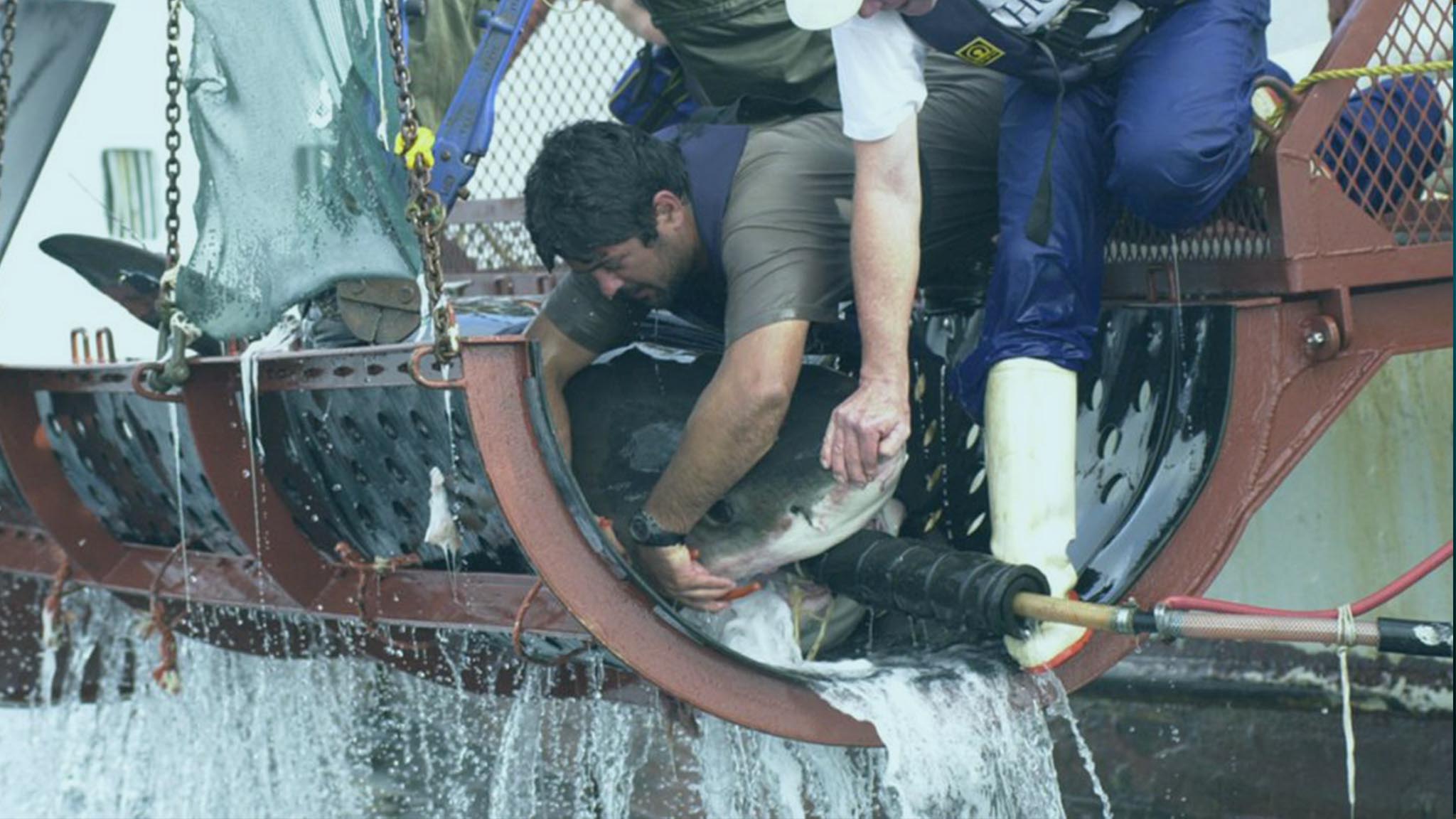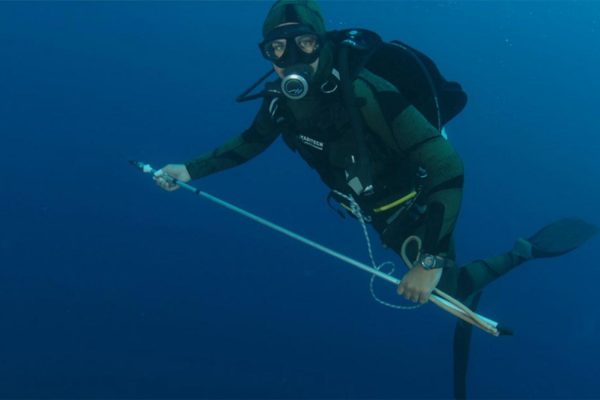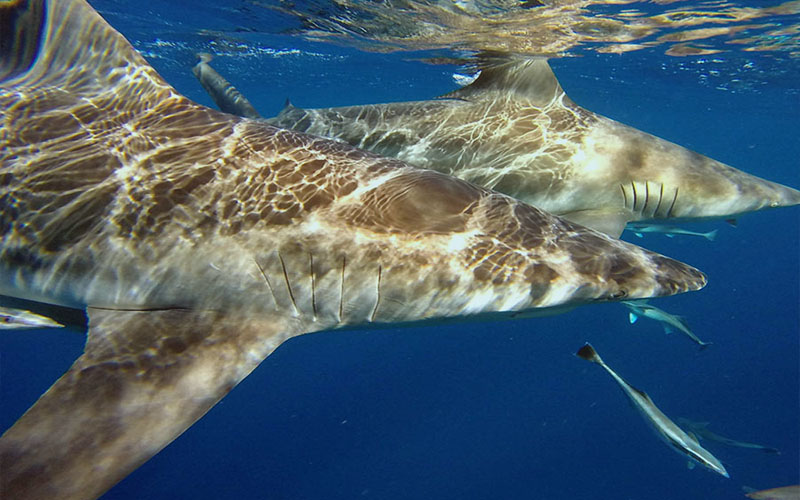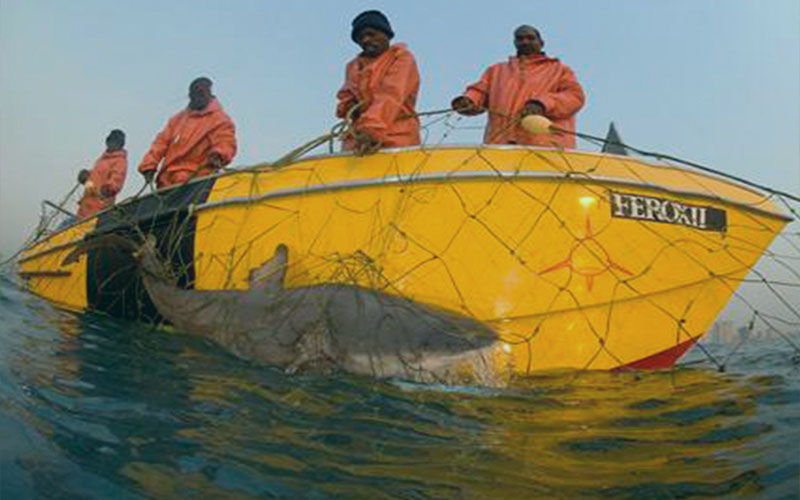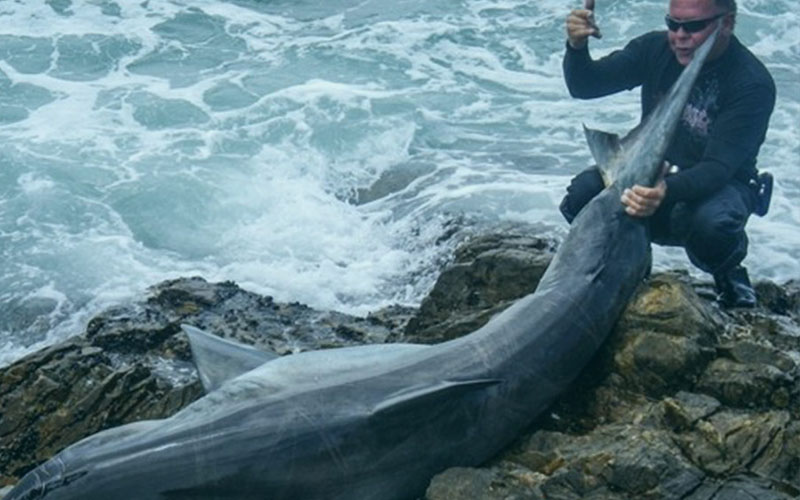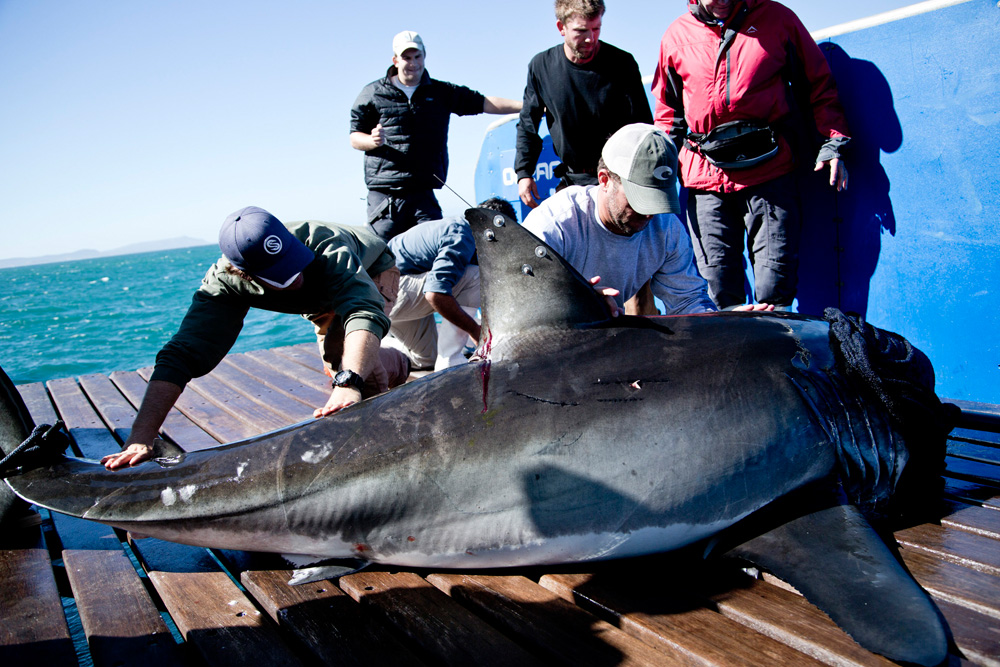Sharks remain one of the least understood, yet fascinating, taxa in the animal kingdom. Over the past decades, I have dedicated my life to revealing the hidden lives of the world’s shark populations by using innovative research techniques, sophisticated scientific equipment, duck tape, cable ties, and lots of shark chum. Today, my research focus centres on applicable science that can result in tangible benefits for the state of the world’s shark populations.
Marine Research Interests
Non-invasive population assessments
Non-invasive mark-recapture techniques using photographic identification can be used to gain deep insights into the population dynamics of the world’s shark species.
My current research is focused on using various biological markers that can enable the long-term identification of individual sharks. In great white sharks, we focus on the dorsal fin notch pattern and pigmentation pattern on the caudal (tail) fin for this purpose.
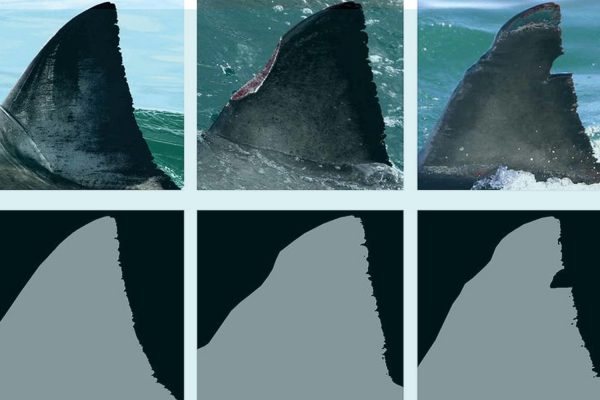
Research & Conservation Highlights

The Gloworm Network is a community-driven online network for natural history media experts and enthusiasts. The community encompasses biologists, filmmakers, photographers, communicators, podcasters, journalists and more. Supercharge your career by Joining Gloworm today.
Academic Publications
- Global spatial risk assessment of sharks under the footprint of fisheries. (Nature) Queiroz, Humphries, … Johnson …. Sims (2019) Read this publication
- Cape fur seals adjust traversing behaviour with lunar conditions in the high white shark density waters of Mossel Bay, South Africa. Morse, Mole, Bester, Johnson, Scacco, Gannari (2019)
- Performance and reliability of active acoustic biotelemetry to best track marine pelagic species in temperate coastal waters. Genneri, Johnson, Cowley (2018) Read publication online
- Antibiotic sensitivity of bacterial flora isolated from the oral cavities of live white sharks (Carcharodon carcharias) in South African waters. Jennari, Kock, Smale, Towner, Khan, Bester, Johnson, Fischer, Meÿer, Morse (2019)
- Spatial and seasonal patterns in sighting rate and life-history composition of the white shark Carcharodon carcharias at Mossel Bay, South Africa. Ryklief, Pistorius, Johnson (2014) – Download this publication
- Fine scale movements and activity areas of white sharks (Carcharodon carcharias) in Mossel Bay, South Africa. Jewell, Johnson, Gennari, Bester (2013) – Download this publication
- Accuracy of Using Visual Identification of White Sharks to Estimate Residency Patterns. Delaney, Johnson, Bester, Gennari (2012) – Download this publication
- Effects of Smart Position Only (SPOT) Tag Deployment on White Sharks Carcharodon carcharias in South Africa. Jewell, Wcisel, Gennari, Towner, Bester, Johnson, Singh (2011) – Download this publication
- Distribution and abundance of humpback whales, Megaptera novaeangliae, off the coast of Mozambique. Findlay, Meyer, Elwen, Kotze, Johnson, Truter, Uamusse, Sitoe, Wilke, Kerwath, Swanson, Staverees, Van Derwesthuizen (2011) – Download this publication
- Impact of shark-feeding tourism on surrounding fish populations off Moorea Island (French Polynesia). Vignon, Sasal, Johnson, Galzin (2009)
- Coastal swimming patterns of white sharks (Carcharodon carcharias) at Mossel Bay, South Africa. Johnson, Bester, Dudley, Oosthuizen, Meÿer, Hancke, Gennari (2009) – Download this publication
- Concordance of genetic and fin photo identification in the great white shark, (Carcharodon carcharias), of Mossel Bay, South Africa. Gubili, Johnson, Gennari, Oosthuizen, Kotze, Meÿer, Sims, Jones, Noble (2009) – Download this publication
- Encounters between white sharks and Cape fur seals in a shallow channel. Johnson, Keswick, Bester, Oosthuizen (2008) – Download this publication
- Seabird predation by white shark, Carcharodon carcharias and Cape fur seal, Arctocephalus pusillus pusillus at Dyer Island. Johnson, R.L., Venter, A., Bester, M.N., & Oosthuizen, W.H. (2006) South African Journal of Wildlife Research 36(1): 23-32.
- White shark abundance: not a causative factor in numbers of shark bite incidents. Kock, Johnson, Bester, Compagno, Cliff, Dudley, Gennari, Griffiths, Kotze, Laroche, Meyer, Oosthuizen, Swanson (2006) – Download this publication
- Seabird predation by white shark, (Carcharodon carcharias), and Cape fur seal, (Arctocephalus pusillus pusillus), at Dyer Island. Johnson, Venter, Bester, Oosthuizen (2006) – Download this publication
- Is there a relationship between white shark presence and the management of city estuaries and river mouths? Oelofse, Kock, Johnson, Haskins (2006) – Download this publication
- South Africa’s White Shark cage-diving industry – is their cause for concern? Johnson, Kock, Bester, Compagno, Dudley, Griffiths, Keswick, Kotze, Laroche, Meyër, Oosthuizen, Swanson, Jacobs (2006) – Download this publication
- Transoceanic migration, long-distance return migration and local movement patterns in the great white shark. Bonfil, Meyer, Scholl, Johnson, O´Brian, Oosthuizen, Swanson, Kotze, Patterson (2005) – Download this publication
- Habitat utilization of the white shark in South Africa, using acoustic telemetry. Johnson, Oosthuizen, Bester, Meyer, Swanson, Kotze (2004)
- Behavioural ecology of the white shark (Carcharodon carcharias) at Dyer Island, South Africa. Johnson (2003)
- Rodent induced damage to a pine plantation: a southern African case study. Ferguson, Van Jaarsveld, Johnson, Bredenkamp, Foord, Britz (2003)
- The effect of afforestation fragmentation on small mammal assemblages at Groenvaly grasslands. Johnson, Ferguson, Van Jaarsveld, Chimimba, Bronner (2002)
- Impact of Cage diving on the Ecology of Dyer Island. Johnson, R., Oosthuzien, W.H. and Bester, M. (1999) Proceedings of International association for Impact assessment (SA affiliate) 1999.
Shark Research Unit
My official institutional affiliation is the Blue Wilderness Shark Research Unit. To learn more about the unit and our research, visit the units website

